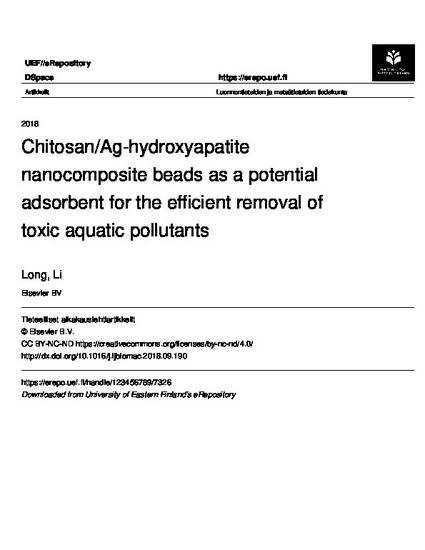
© 2018 Elsevier B.V. In the present study, the potential of synthesized chitosan/Ag-substituted hydroxyapatite nanocomposite beads to remove basic dye, heavy metal and microbes from aqueous solutions was investigated. Beads were prepared in different ratios via embedding of Ag-hydroxyapatite (Ag-HA) into chitosan (CS) solution. The beads were characterized by Fourier transform infrared spectroscopy (FT-IR) and scanning electron microscope (SEM) in order to get an insight of the functional groups and morphology. Batch adsorption studies were conducted with copper ions (Cu (II)) and rhodamine B (RhB) dye by changing several parameters such as Ag-HA to Cs ratio, contact time, solution pH and initial concentration of pollutants. The antibacterial efficiency of beads was tested under dynamic contact conditions against commonly found bacteria in water, Escherichia coli. The adsorption isotherm data were best fitted with Langmuir model. The maximum Langmuir adsorption capabilities for Cu (II) ions and rhodamine B were found to be 40.11 mg/g and 127.61 mg/g, respectively. The adsorption process could be best described by pseudo-second-order kinetic model for both rhodamine B and Cu(II). The percentage removal efficiency of Cu (II) and rhodamine B from tap water and untreated river water ranged from 86.7 to 94.4% along with 99.99% of decontamination of microbial load.
- Adsorption,
- Chitosan/Ag-hydroxyapatite (CS/Ag-HA) beads,
- Copper,
- Rhodamine B,
- Water treatment
Available at: http://works.bepress.com/jibran-iqbal/55/